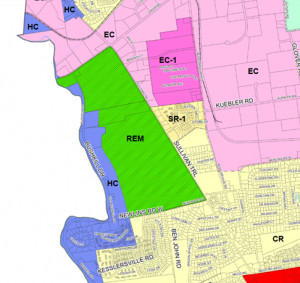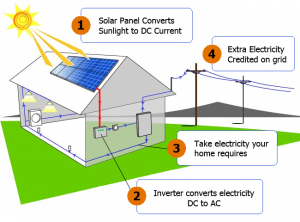Policy Analysis (GH)
For this project, we have to understand that all laws and regulations revolving around this greenhouse will ultimately shape the end result of the project. The point of this section is to analyze and bring forward the processes necessary to make the greenhouse possible. This section is to lay out how a greenhouse design can be accomplished and the policies that are involved from a Federal level, from the policies in Pennsylvania as well as county ordinances, and policies of Lafayette College. This section will bring forth examples of colleges that have greenhouses implemented, their progress, and any information allowed pertaining to their regulations and how they implemented.
As of right now, this is the first time Lafarm is trying to implement a greenhouse approved by their board of trustees making this process just as new to them as it is to the Capstone group. As mentioned in our introduction we seek to instill a Gothic-Greenhouse at Lafarm after our discussion with Sarah Edmonds and Professor Cohen.
COLLEGE GREENHOUSES
Many colleges and universities across the country have already implemented greenhouses on campus not only for food consumption but as well for learning experiences. Looking towards these colleges will show us how other farms operate- the governance of the greenhouse and its workers along with their systems and temperature control. It will also show us how some colleges integrate the greenhouse with college life and academics. While some greenhouse examples may be more state of the art and more expensive than what we are working on, looking at current college greenhouses will give us insight of what we could implement given our size and budget.
 Figure 1Long Island Horticultural Research and Extension Center (LIHREC). (2016). Retrieved from https://cuaes.cals.cornell.edu/farms/lihrec
Figure 1Long Island Horticultural Research and Extension Center (LIHREC). (2016). Retrieved from https://cuaes.cals.cornell.edu/farms/lihrec
The first greenhouse is from Cornell University in Ithaca, New York. Cornell University offers a sector called “College of Agriculture and Life Sciences” which offers a broad variety of programs that bring forward the historical agricultural roots (Cornell University, 2014). This major allows students to engage in research facing challenges involving climate change that will impact many crops with either drought, extreme heat waves, or major flooding. Within this major, Cornell has a number of resources, one being the Cornell Controlled Environment Agriculture. These facilities range from very low-tech to fully-automated greenhouses. This site in particular focuses on hydroponic-systems; plants are grown in a controlled environment which horticulture can be optimized (Cornell University, 2014). The two most important factors of this optimization is temperature and light. With a climate that is cloudy, supplemental lighting is necessary, electricity, yearly for suitable lighting.
The Cornell Facilities acknowledge the help of getting the greenhouse by their generous sponsors currently and during the start-up phase. Cornell has sponsors such as NASA and Nyserda (Cornell University, 2014). Cornell also has 9 generous sponsors during the start-up phase. Sponsorship is something Lafayette College should consider if LaFarm looks to have a greenhouse with all of the technology that Sarah Edmonds had mentioned in previous interviews.
Cornell offers FAQ’s varying from technical questions regarding hydroponics’ growing and greenhouse crops overall. Cornell researchers believe that the most beneficial crops to grow in a greenhouse would be iceberg lettuce, grains, and melons. They also suggest in recruiting a head grower that we must look towards other facilities since they do not grow on trees.
Along with its multiple resources and publications, we acknowledge as brought up early on that Cornell’s greenhouses are involved in the educational field. Cornell has accomplished several research projects with students: temperature control, energy, marketing, and lighting along with the produce such as lettuce, tomato, and spinach. Cornell’s accomplishes is a strong example to look at and use their ideas and suggestions in regards to our greenhouse implementation.
LAFAYETTE COLLEGE POLICIES
Lafayette College currently does not have any restrictions on the design and construction of a Gothic Greenhouse, which would require some electrical system, it would be strongly advised to have it constructed professionally. Lafayette currently benefits greatly from the Lafarm produce as Bon Appetit uses its produce. While Lafarm cannot grow all the food for Lafayette, they are the sole providers of specific fruits and vegetables. To gain more support for the greenhouse it is important to show the benefits the greenhouse will have on Lafayette’s future. This is done through Lafayette’s Sustainable Food Loop. The Sustainable Food Loop is a system through which the food is grown at the farm, eaten in the dining halls, composted by Plant Ops, and then that compost is returned to Lafarm to grow more food, and the cycle continues. The goal of the food loop is to make Lafayette’s food more sustainable and help further educate students about sustainability. However LaFarm cannot produce nearly enough food to feed the entire campus. The greenhouse would support the food loop and produce more food for campus resulting in increased productivity.
Lafayette is the only college or university in the Lehigh Valley to have signed the American College and University Presidents Climate Commitment. This is an initiative aimed at reducing greenhouse gasses. Since signing in the Commitment in 2008, the College has calculated its emission of greenhouse gasses, completed a campus-wide energy audit, and developed a Climate Action Plan for reducing its carbon footprint (PA Climate Change Action Plan, 2009). Its goals entail to implement a selected set of energy conservation measures as part of the plan to reduce GHG emissions by 20% by 2021.
The Campus Energy Policy states that all new construction and major renovations will meet Leadership in Energy and Environmental Design (LEED) silver standards for sustainability and green architecture (Campus Energy Policy, 2011). Student Organizations such as Lafayette Food and Farm Cooperative can request funding from student government for potential help in paying for the greenhouse.
Please refer to each of the sources to further understand each of Lafayette College’s Policies.
PENNSYLVANIA/FORKS TOWNSHIP POLICIES
A factor to consider in the construction of the Lafarm greenhouse are building codes, permits and zoning. Lafarm is located adjacent to Lafayette’s Metzgar Sport’s Complex which resides within Forks Township. On the Forks Township zoning map, Lafarm is located in an area referred to as REM (recreational/educational/municipal); this means that the land can be used for a variety of purposes which includes agricultural purposes (Forks Township Zoning Map, 2006).
According to Article IV: District Regulations of Forks Township, agriculture is permitted by right of within the Forks District of REM along with Residential Solar Energy System and Non-Residential Solar Energy System. Some regulations pertain towards the construction of the greenhouse. Ordinances state that unless for stadium structure there is a maximum height of 2-1/2 stories is permitted for any construction and minimum lot area of 2 acres (Ordinance 285 Code 77, 2004). Article V of Forks Township does not place any restrictions on “Uses Regulations”. Other than these regulations, any other legal regulations from the state of Pennsylvania are very broad and not strict making the design of the greenhouse easier.

Figure 2Township of Forks. (2006) Zoning Map. http://www.forkstownship.org/compplan/ezone.pdf
Article VI of Forks Township discusses Environmental Performance Standards (Ordinance 331 Code 200, 2014). While Lafayette owns the property and may do with it as it pleases, alterations still must be made notice to Fork’s Township and there are requirements for all uses. Lafarm should be exempt from the several forms and regulations as it fits the criteria listed in provisions in this article: steep slopes of less than 3,000 square feet land area, previously and substantially developed lots, and the portion of the land directly affected by location of a through-road or other community facility as determined necessary by the Board of Supervisors.
NET-METERING
Since the primary goal of the greenhouse at Lafarm is to be carbon-neutral, our technology analysis includes alternatives of energy sources on AND off the grid. While Lafarm has strong personal feel towards “off the grid”, there are other options to consider that will be cost-efficient. One alternative for on the grid energy is Net-Metering which was discussed further in detail in the Technology Analysis.
Net-metering is a system of solar panels or another renewable energy generator is connected to a public-utility grid and the surplus power is transferred onto the grid, allowing the customer, Lafarm in this manner, to offset the cost of power drawn from the utility (Stoutenborough, 2008). Each state has its own regulations regarding Net-metering whether it is used and if so how is it regulated and maintained. The state of Pennsylvania has a list of sources of personal and locally produced energy that is available for sale. The most beneficial that Lafarm would use are photovoltaics, small wind, and wind (State Metering Policies, 2016). Pennsylvania is constantly encouraging the installation and uses of clean energy systems.

Figure 3http://www.energysavingcorporation.com/netmetering-in-chandigargh-ut/
For regulations, there are specific criteria that are required that Lafarm would have to follow. To be eligible for net-metering, a residential customer must produce at most 50 kilowatts and a non-residential customer 3 but no more than 5 megawatts (State Metering Policies, 2016). Thus, a customer who chooses an electricity supplier other than utility must check to see if they offer net-metering. If a non-residential customer is willing to operate its system in parallel with the electric grid during emergencies they can meter up to 5 MW. To net-meter, the customer must own or lease the property where the clean energy system is installed. The meters must be within two miles of the property and must be in the same utility service territory as the grid. Pennsylvania’s regulations allows for net-metering on properties that are owned or leased and run by the customer generator (State Metering Policies, 2016).
For Lafarm, the utility must provide the necessary equipment for meter aggregation, but the customer pays for it. The environmental attributes to net-metering are that customers retain ownership of alternative-energy credits, or better referred to as “renewable-energy credits”.
OFF THE GRID REGULATIONS
Often, off the grid systems make sense in rural areas where it could be expensive to extend to existing power lines, which can cost between $15k-$150k. However, installing an off the grid system can be more work than intended.
Lafarm will first have to research the equipment needed, and will need “balance-of-system” equipment to condition the electricity, as well as transmit and/or store for future use (Stowers, 2014). If Lafarm also wishes their system to store energy when not in use, then they will have to decide on a battery storage system. Next, Lafarm will have to calculate their electricity load in order to understand how Lafarm’s energy usage fluctuates daily and annually. Every jurisdiction is different and has different laws and regulations and building codes regarding the types of renewable energy systems that can be installed and who can install them. Lafarm must check the state energy office or a local renewable energy organization to see what requirements apply to Fork’s Township. This organizations can be found on the page “Sustainable Energy Fund of PA” where they provide a list of energy service provided by types of businesses. Please refer to the “Technical Analysis” for calculations for off the grid technology for Lafarm.
FEDERAL REGULATIONS
The only laws and regulations that are enforced federally in regards to greenhouses are what plants are allowed to bought and sold to other countries. That being said, there are federal policies that apply specifically to agriculture which would affect the usage of greenhouses. For farming in America, the Food Safety Modernization Act plays a factor. The Food Safety Modernization Act of 2010 was signed into law by President Barack Obama which aims to ensure the U.S. food supply is safe by shifting the focus of federal regulators from responding to contamination to preventing it. Regulations for the FSMA are based on size of the farms. The farm must be makings about $500,000 of revenue (Food Safety Modernization Act, 2010).
The FDA as well expands on the rule of who is subject to food facility registration. The expanded definition allows establishments that are located on a farm or “farm operated business” may consider sales directly to consumers via roadside stands, farmers market, and other direct-to-consumer activities in determining whether they are considered retail food establishments (Registration of Food Facilities, 2016). The FDA also considers a “farm operated business” as one that is managed by one or more farms that conducts manufacturing/processing not on the farm. And those that meet or exceed these are exempt from food facility registration requirements. Currently, LaFarm does not make this profit and meets these standards so it is technically exempt from this Act. However, Lafarm still strives towards this policy to ensure food safety at Lafayette as well as implementing educational practices. Implications of FSMA towards greenhouses includes water quality standards for irrigation and washing the food (FSMA, 2016). Since Lafayette wishes to comply with these standards, an upgraded washing, packing, and storing area in the greenhouse should be considered.
FEDERALLY FUNDED PROGRAMS
As mentioned in the economic analysis, other options for funding the greenhouse can come from federal grants. Typically, grants are awarded to states, local governments, universities, law enforcement, organizations, and institutions that will benefit specific parts of the community or society. In this case, our grant would benefit the Lafayette Community as well the Easton/Forks Township Community.
The Government has a free official website called Grants.gov which will centralize information of over 1,000 government grant programs to help states or organizations apply for grants (Government Grants). To apply online requires a multi-step process. Lafarm would first register online at fedgov.dnd.com/webform which requires IRS information. Lafarm will then be issued a data universal number and this process can take up to 1-2 days. They will then use the DUNS to register at SAM (system for award management) which will establish E-business point of contact which is someone who oversees all activity on this system. They will then establish a marketing number which could take up to 7-10 days. This information will then be transferred to grants.gov where you will be registered and then search the website for funding opportunities. An example of a funding opportunity is “Organic Agriculture Research and Extension Initiative” (Grants.Gov, 2016). This grant is eligible for colleges and universities whose purpose is to fund projects that will enhance and emphasize research and education for farmers and farm planning within a community. This grant is one of several examples that would help Lafarm build a greenhouse and build on the Lafayette community and the community around the greenhouse.
